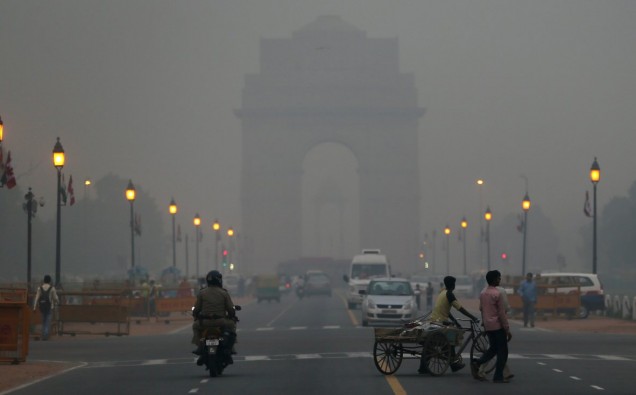Experts at the University of Birmingham are joining forces with partners in India and the UK on a project to help tackle health problems associated with air pollution in Delhi.
With air pollution levels at times up to 30 times greater than those found in the UK, Delhi was rated as the most polluted city in the world for ambient air pollution by the World Health Organisation (WHO) in 2014.
Involving leading researchers from universities in India and the UK, the team put together by Birmingham air pollution experts will investigate the causes of pollution in the Indian capital city, which is home to some 18 million people.
‘ASAP-Delhi: An Integrated Study of Air Pollutant Sources in the Delhi National Capital Region’ is supported by a £1.4 million grant from the Natural Environment Research Council (NERC) and the Medical Research Council (MRC) Air Pollution and Human Health programme.
Led by the University of Birmingham, the team involves experts from the Indian Institute of Technology (IIT) Delhi and the Indian National Physical Laboratory, as well as the University of Surrey.
Professor Mukesh Khare, from IIT Delhi, commented: “Air quality is one of the most important environmental challenges facing Delhi. This project will allow us to definitively quantify the contributions of different sources to fine particles in Delhi’s air – a key step to solving this problem.”
Experts will measure airborne particulate matter and analyse how the pollution is being generated. Results from this work will feed into other research projects in a wider NERC programme and be used to help efficiently reduce pollution levels and improve population health.
Professor William Bloss, Head of the School of Geography, Earth and Environmental Sciences at the University of Birmingham said: “Some 46 million people live in and around Delhi and extremely high particulate matter levels are responsible for damaging citizens’ health and the environment, leaving many people unable to work, which has significant economic implications for the region.
“As a global ‘civic’ university, the University of Birmingham looks to enrich the life of both our home city and others globally. This partnership in Delhi chimes with Prime Minister Narenda Modi’s Smart Cities Mission to make India’s cities citizen-friendly and sustainable.”
Professor Bloss added that many Asian countries, including India, were undergoing rapid industrial development and urbanisation, leading to sharp increases in population exposure to poor air quality in cities – mainly fine and ultrafine particles.
“We’ve designed the project to better understand the sources of the most dangerous air pollutants in Delhi,” said Professor Bloss. “It partners leading researchers from India and the UK and will allow us to assess the likely effectiveness of changes in behaviour – for example odd/even number plate traffic bans – to improve air quality.”
The project runs for four years and will involve a series of field studies and follow-on analyses to determine the sources and processes responsible for airborne particulate matter in Delhi, linking with other projects funded in parallel to develop mitigation options.
Work at Birmingham has already discovered a sharp reduction in visibility caused by fireworks events.
Scientists found that visibility was further decreased when the relative humidity was high. The research showed that events such as Diwali celebrations and Guy Fawkes’ Night affected short-term air quality and lead to significant reductions in visibility.
Dr Francis Pope’s research used data taken over 13 years between 2000 and 2012 from 34 meteorological stations throughout the UK the scientists noted an average 25% reduction in visibility caused by atmospheric particulate matter from fireworks and bonfires.

















